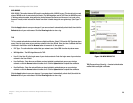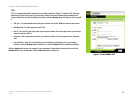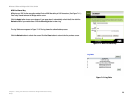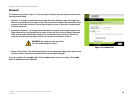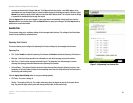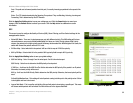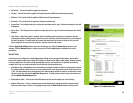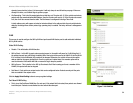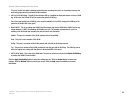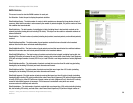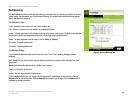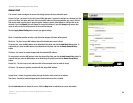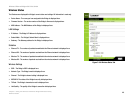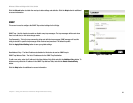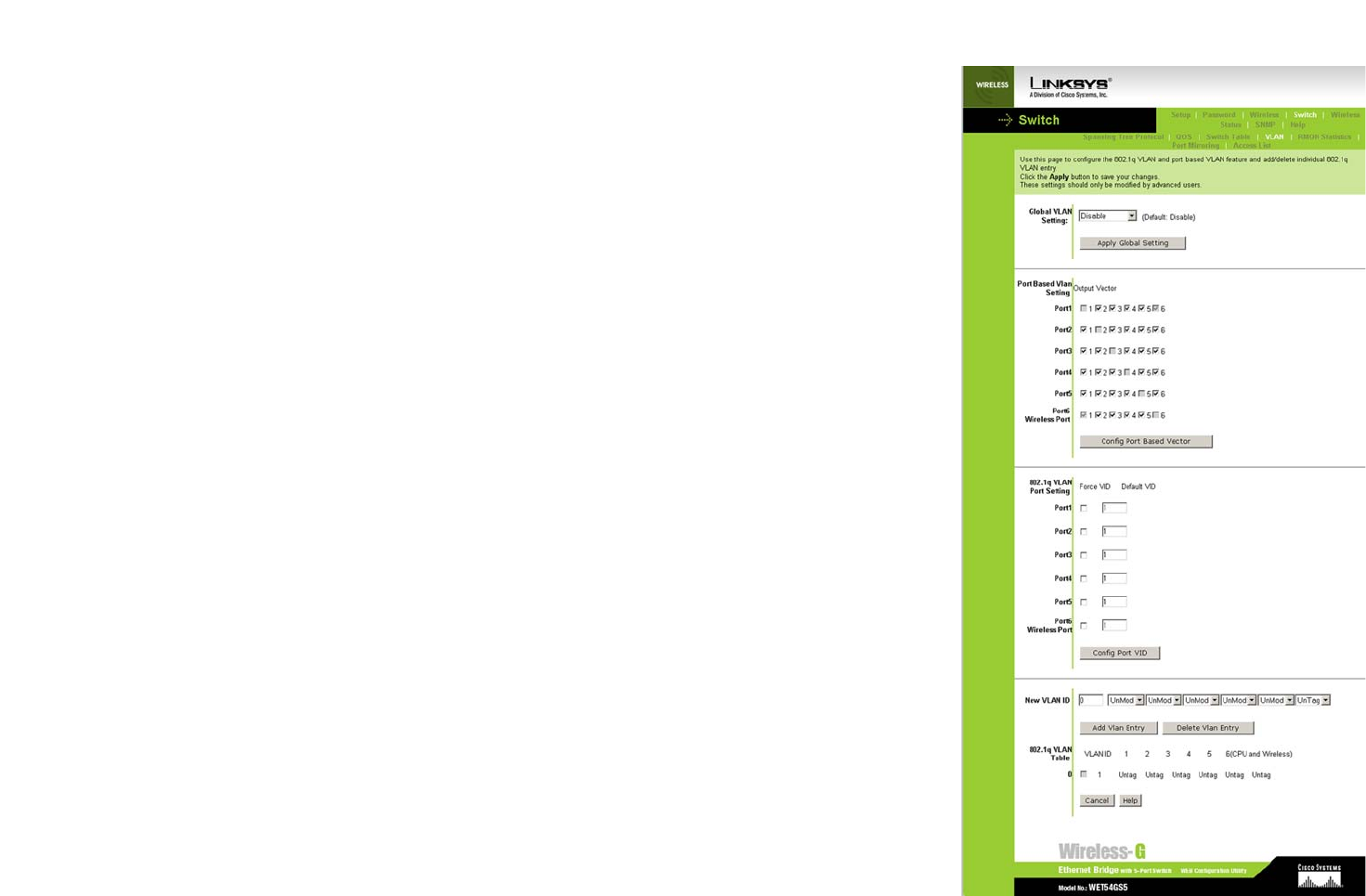
34
Chapter 7: Using the Wireless-G Ethernet Bridge Web-based Utility
Wireless
Wireless-G Ethernet Bridge with 5-Port Switch
dynamic learned entries to force it to learn again. It will only dump at most 64 entries per page. If there are
already 64 entries, use Get Next Page to get more pages.
• Life Remaining - This is the life remaining before an idle time out. The value is 0-15. If the switch received any
packets with the same destination MAC address, then the life value will reset to 15. If the life value decreases
to 0, then it will be removed from the table. The idle timeout is configured in the Age Timer field.
A static address entry will appear as locked or locked multicast in the address table. An entry might also be
added by the bridge when certain protocol (eg. spanning tree) is enabled. That entry will have a management
subtitle.
VLAN
This screen is used to configure the 802.1q VLAN and port based VLAN feature, and to add and delete individual
802.1q VLAN entries.
Global VLAN Setting
• Disable - This will disable all VLAN function.
• 802.1q Check - In this 802.1q mode, when a packet comes in, the switch will parse for it's VLAN tag first. If
the packet does not have a VLAN tag, the default VID of the inport will be used as its VLAN ID. If the final VLAN
ID is not listed in the VLAN table, this packet will be dropped. Otherwise, the switch will search the switch
address table for the egress (output) port. Once the egress port is determined, the member option will be
used to determine if the switch will add or remove the tag or drop the packets.
• 802.1q Secure - This is similar to the 802.1q Check mode. But if the incoming port is not a member of this
VLAN ID, this packet will also be dropped.
• Port Based - Each port has an outport vector that can be configured below. Packets can only exit the ports
that are enabled in the outport vector.
Click the Apply Global Setting button to save your global settings.
Port Based VLAN Setting
• This is to set the Port Based VLAN Map. For each port, if the output field is checked, then packets are allowed
to exit that port. Packets are not allowed to enter and exit the same port.
Figure 7-18: VLAN Tab



